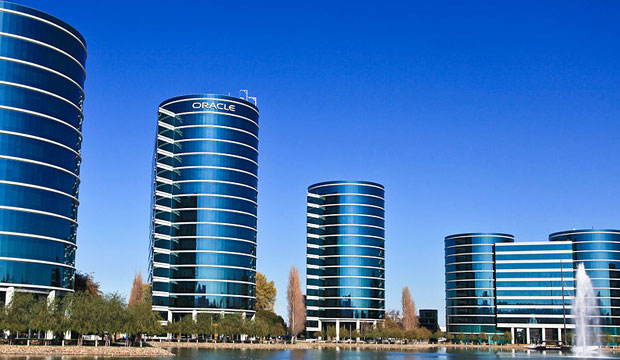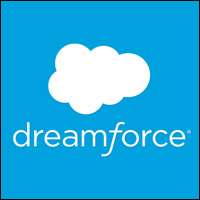Markets grow at the margins. This bit of sage advice was given to me at the start of my analyst career, and it has kept me in good nick for nearly two decades. Of course the focus has drifted over time but that’s the point: The CRM market has evolved, and the job of an analyst is to make sense of the evolution.
Oracle OpenWorld 2018 held in San Francisco this week is a laboratory for the margin. There’s no arguing that the company missed the early run-up of cloud computing, at least on the application side. However, it supported the cloud pioneers on the database side while gaining valuable insights. This week’s announcements show that Oracle learned a lot — enough to fuel what Larry Ellison called “Gen 2 Cloud.”
Some of Oracle’s learnings contributed to creation of the autonomous database and security solutions built into it, giving it a big market lead that goes well beyond performance to include autonomy, security and more. Other things that made their way into products amount to the kinds of things any company needs to figure out to be a factor in the cloud.
There’s also a quirky flip side to all of this. Oracle has been the database of choice for much of the cloud computing industry. Scratch the paint off a dot-com logo, and you’ll likely find some Oracle red primer. That’s not a bad thing at all, but it is ironic.
Oracle is diving into the cloud industry and trying to become the leader in platform, infrastructure and apps, but the more it succeeds in the lower end of the stack, with major components like the autonomous database, the more it will find itself competing with itself.
Software as a Service vendors already using the Oracle DB most likely will move to the autonomous version with speed and dispatch. Many already have been using devices like Exadata to host their databases in memory to provide the fastest-possible response times. Enhanced security and self-patching capabilities for most of them are right around the corner.
Oracle will find itself in the semi-flattering position of competing with its own stack as it proceeds into the apps market. No doubt there’s plenty of differentiation to be found between Oracle apps and others, and plenty of reasons that a large enterprise might choose Oracle, but it won’t be a slam-dunk in many cases. Oracle and its apps competition will continue going toe-to-toe for the foreseeable future.
Here are some areas at the margin that I think will find broad utility in the SaaS world among the company’s many vendor customers, as well as in the enterprise.
Cloud Platform
There are six platform areas where Oracle continues to make serious investments, company representatives noted in the analyst briefing. They include mobility, data management, custom apps, integration, business insight and collaboration.
It is easy to argue that all six equally benefit both the large enterprise and the SaaS vendor — which from an IT perspective looks a lot like a large enterprise, even if it might serve small and mid-sized businesses.
Three out of four workloads Oracle is most focused on also directly impact SaaS companies. They include high-performance computing, data-intensive applications, and cloud-native applications. A fourth workload, enterprise move and improve, seems tailor-made for legacy systems that can be moved via the Bring Your Own License (BYOL) program, which doesn’t have a lot of appeal in SaaS.
Enterprise Security
If you are a software vendor or an enterprise today and you aren’t concerned about security… really? Some of the stats Oracle touted show just how far behind we are in defending the enterprise and, by extension, the SaaS business.
To date, the SaaS vendors seem to have done a better job of securing their infrastructures — but you have to ask, at what cost? If there are ways to slash operating costs in SaaS and redeploy assets to serve customers, who wouldn’t?
Oracle noted four scary security-related issues:
- Exposure to threats. Eighty-five percent of breaches exploited a vulnerability in which a patch was available but an organization had not gotten around to applying it.
- Limited expertise. By 2021, there will be 3.5 million job openings in cybersecurity. The big analyst firms have been talking about this for a while.
- We’re swamped. There are just fewer than 17,000 alerts per week at the average enterprise. Only 4 percent get investigated.
- Poor tools. There’s an old joke about building a 747 with Stone Age tools. This is the modern equivalent.
In one of his keynotes, Larry Ellison said, “We need a cyberdefense system that automatically detects vulnerabilities and attacks. It can’t be our people versus their computers. We’re going to lose that war. It’s got to be our computers versus their computers. And make no mistake, it’s a war.”
That’s about right — only I’d emphasize that wars aren’t fought between governments and corporations. This is a mismatch. The ongoing war in IT is all about national economic supremacy in the next century.
A lot of nations want what the West has spent a very long time and lots of treasure building, and for some reason they figure it’s easier to steal than to do their own R&D.
Digital Assistants
Oracle hasn’t limited its use of automation to its infrastructure. It has multiple credible offerings that combine analytics and machine learning to produce digital assistance, and assistants that can automate away some of the drudgery of modern customer-facing work.
In this case, I’d say that although Oracle’s products are very good, they might not have much of an advantage over other vendors. The reasons are simple and go beyond technology — or more precisely, all vendors see the same problems and have the same technologies for solving them.
The big issue facing everyone today is using technology to automate away rote process steps to make jobs more meaningful, while also delivering superior customer experiences and reducing error and cost. Oracle sees this, and so do many other vendors.
They’ll all be competing on this plane, but with Oracle’s vertical integration to the infrastructure, it could have an advantage. For now, you won’t get fired for choosing Oracle.
Rounding Up
At the lower levels of infrastructure and platform, Oracle is delivering credible solutions for both the enterprise and the SaaS vendor, which should cement its position versus other infrastructure vendors on both price and performance.
Still dogging the company is a perception of being a sharp-elbowed competitor, which is hard to deny and has turned off some folks. However, the turn to the cloud has not simply meant a technology reinvention. The company has understood that it needed to reinvent itself as one dedicated to the customers in the round.
It’s an ongoing project, but the vibe in the customer base and throughout the Moscone’s cavernous halls tells me there’s too much going on not to believe that a change is happening.
This piece is woefully inadequate because of what it can’t get to. At some point, we need to visit issues like blockchain and subscriptions, and do a deep dive on analytics. For now, it’s clear that Oracle has been delivering a lot on a lot of fronts.
That’s the trouble with growth at the margins. Perimeters continually expand, and growth requires large and robust competitors to man the barricades. It’s one reason that as markets grow at the margins, they trend toward oligopoly.
















































Social Media
See all Social Media